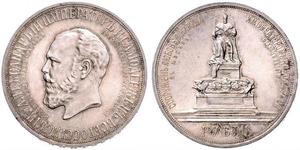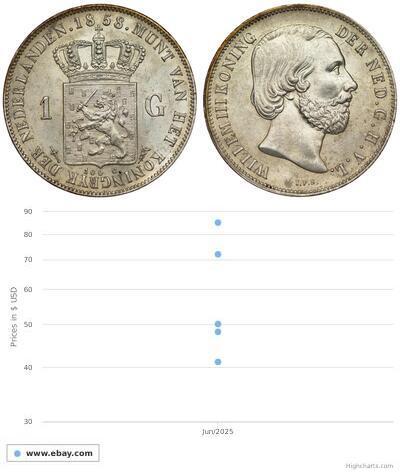(sold for $451.0)
1617, Alsace, Strasbourg (Free City). Beautiful Silver Thaler Coin. Rare!
Denomination: Thaler
Mint Place: Strasbourg (Alsace)
Mint Year: circa 1617 (not dated type)
Mint Master: J. G. Lutz (cross, flanked by mint-hooks)
References: Davenport 5842, Engel/Lehr 439, KM-306. RR!
Condition: Minimal planchet imperfections in obverse, light dark oxidation deposits, otherwise a nice XF!
Diameter: 43mm
Weight: 28.6gm
Obverse: Shield with arms of Strasbourg, topped by fleur-du-lis, supported by lions. Privy mark (flanked by mint-hooks) in legend above.
Legend: \ + / NVMMVS * REIP * ARGENTORATENSIS :
Reverse: Large fleur-du-lis symbol (arms of Strasbourg) within inner circle.
Legend: SOLIVS * VIRTVTIS * FLOS * PERPETVVS :
Strasbourg (Straßburg) is the capital and principal city of the Alsace region in eastern France and is the official seat of the European Parliament. Located close to the border with Germany, it is the capital of the Bas-Rhin departement. The city and the region of Alsace are historically German-speaking, explaining the city's Germanic name.
Authenticitcy unconditionally guaranteed.
The Free City of Strasbourg remained neutral during the Thirty Years' War, and retained its status as a Free Imperial City. However, the city's independence fell victim to the ambitions of King Louis XIV of France to extend the borders of his kingdom.
Louis' advisors believed that as long as Strasbourg remained independent, it would endanger the King's newly annexed territories in Alsace, and that to effectively defend these large rural lands a garrison had to be placed in such towns as Strasbourg. Indeed, the bridge over the Rhine at Strasbourg had been used repeatedly by the Imperial (Holy Roman Empire) forces, and three times during the Franco-Dutch War Strasbourg had served as a gateway for Imperial invasions into Alsace. In September 1681 Louis' forces - though lacking a clear casus belli - surrounded the city with overwhelming force. Louis marched into the city on September 30, 1681 and proclaimed its annexation.
This annexation was one of the direct causes of the brief and bloody War of the Reunions whose outcome left the French in possession. The French annexation was recognized by the Treaty of Ryswick (1697).
The official policy of religious intolerance which drove most Protestants from France after the revocation of the Edict of Nantes in 1685 was not applied in Strasbourg and in Alsace, because both had a special status as a province à l'instar de l'étranger effectif (a kind of foreign province of the king of France). Strasbourg Cathedral, however, was restored from the Lutherans to the Catholics and the French authorities tried to promote Catholicism wherever they could. The German Lutheran university persisted until the French Revolution. Famous students were Goethe and Herder.
During a dinner in Strasbourg organized by Mayor Frédéric de Dietrich on 25 April 1792, Claude Joseph Rouget de Lisle composed "La Marseillaise". However, Strasbourg's status as a free city was revoked by the French Revolution. Enragés, most notoriously Eulogius Schneider, ruled the city with an increasingly iron hand. During this time, many churches and cloisters were either destroyed or severely damaged. The cathedral lost hundreds of its statues (later replaced by copies in the 19th century) and in April 1794, there was talk of tearing its spire down, on the grounds that it hurt the principle of equality. The tower was saved, however, when in May of the same year citizens of Strasbourg crowned it with a giant tin Phrygian cap. This artifact was later kept in the historical collections of the city until they were all destroyed in 1870.
In 1805, 1806 and 1809, Napoléon Bonaparte and his first wife, Joséphine stayed in Strasbourg. In 1810, his second wife Marie Louise, Duchess of Parma spent her first night on French soil in the palace. Another royal guest was King Charles X of France in 1828. In 1836, Louis-Napoléon Bonaparte unsuccessfully tried to lead his first Bonapartist coup in Strasbourg.
Only 1$ shipping for each additional coin purchased!

|
Posted by:
anonymous 2014-01-29 |
1 Ruble Russian Empire (1720-1917) Silver
group has 12 coins / 12 prices
⇑

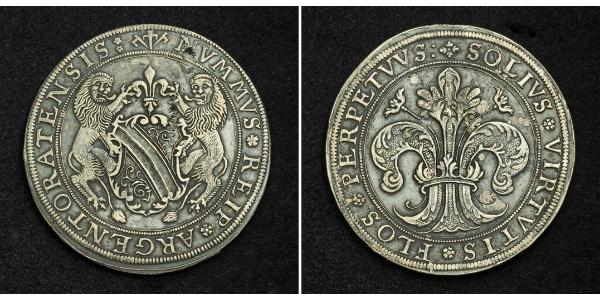





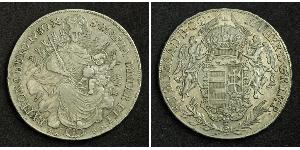





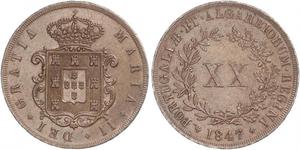

-300-150-72sKbzbis7EAAAFPBUQ1Mk0C.jpg)
